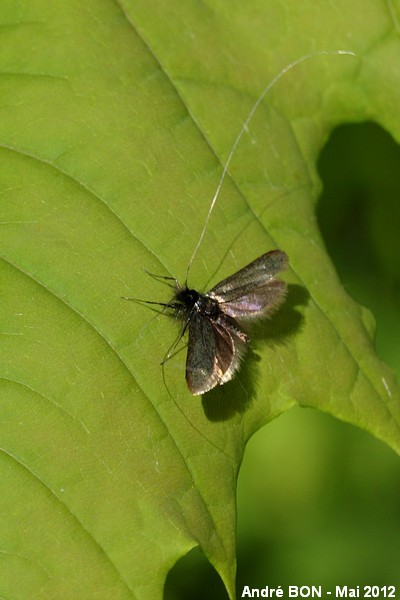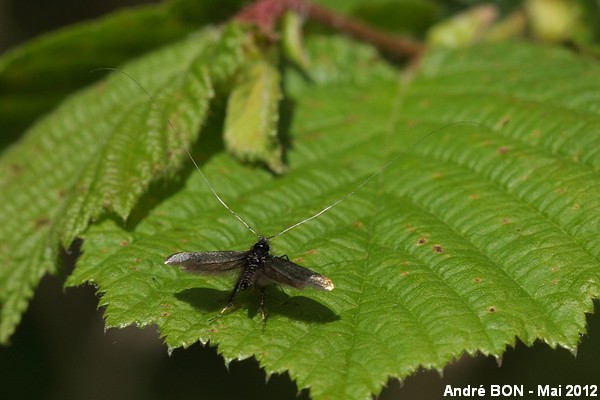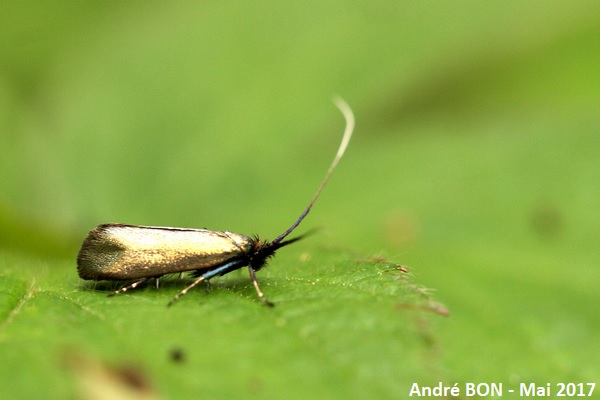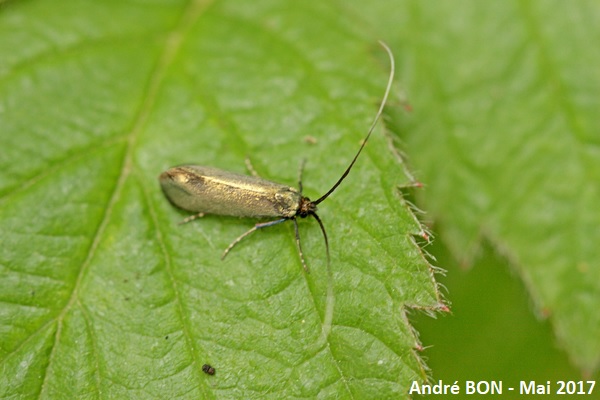



| Green Longhorn (Adela reaumurella (Linnaeus, 1758)) |




|
|
Scientific name: Adela reaumurella (Linnaeus, 1758) Common name: Green Longhorn French name: Adèle verdoyante, Adèle noire-bronzée Order: Lepidoptera Suborder: Microlepidoptera Family: Adelidae Subfamily: Adelinae Wingspan: 14 to 18 mm. Biotope: Open habitats, woodland edges, heath lands, parks and gardens. Adults are often observed near the top of trees and bushes. Geographic area: Europe. Flight time: May-June. Number of generations : 1 Caterpillar: The yellowish caterpillar lives under the litter, in a portable case, and feeds on dead leaves of Oaks, Hazels, Birches or Beeches. Host plant: During a short period, the caterpillars feed on the following host plants: Hazels (Corylus), Beeches (Fagus), Birches (Betula) and Oaks Quercus). Then they move down to the ground inside a portable case made with pieces of dead leaves. |
The Green Longhorn is a small moth with very long antennae. Males are a greenish bronze black colour with a metallic sheen. The hind wings are dark reddish brown. The thread-like antennae reach three times the length of the wing. The thorax and the head are covered with long black hairs. The colour of females is more bronze. Their antennae are shorter and only reach 1.5 times the length of the wing. They are of two colours, black at the base and white at the tip. There is a small tuft of orange hair on the back of the head. Males fly in the sunlight, close to bushes, sometimes forming large swarms. Male Adela cuprella show the same black hairs and long antennae. The colour of the wings is more bronze and they are mainly found on Willows. Females have a yellowish or orange head. Brassy Long-horns (Nemophora metallica) are distinguished by their large greenish eyes. |
| [To know more about the Green Longhorn] [Next picture] [Top] |

|
It is not so easy to take a picture so that the long antennae are well visible. Their length of about three times the length of the wing indicate one male. |
| [To know more about the Green Longhorn] [Next picture] [Previous picture] [Top] |

|
Here is another male photographed not far from the previous one. |
| [To know more about the Green Longhorn] [Next picture] [Previous picture] [Top] |

|
And here is a picture of the female with its much shorter bicolored antennae. |
| [To know more about the Green Longhorn] [Previous picture] [Top] |

|
Upper side view of a female. You can distinguish the small tuft of orange hair on the top of the head. |